Guitar Modes – Block Positions
Start using modes with these 7 block positions. Get an understanding of where guitar modes come from and take the first steps in applying them in your playing technique.
Guitar Modes – The Theory
There is a lot of mystery surrounding what modes are and more importantly how to use modes on the guitar. Completely grasping the whole concept can take years and years of practice and at the end, you may still find yourself second-guessing.
Over the years of teaching I found the best method of understanding guitar modes is to break it down to its core elements. Understanding what they are and where they come from is vital in taking the next step forward in successful application.
Lets begin by looking at what modes are.
Modes simply put are a change of your mindset. You’ll find that the applications of a lot of concepts in music are simply a change of the way you think about it. Lets face it. There are only 12 notes to work with. However there are a countless ways that you can change the way you organise these 12 notes. As musicians some of the ways we do this are with Chords, Arpeggios and Scales.
Modes are a classic example of this reorganisation of notes. For the sake of this lesson, we’ll use the Major scale to demonstrate this concept. The Major scale has 7 notes (before repeating itself at a higher octave) with 7 intervals between each note. Remember that the sound of a scale is determined by the intervals between the notes, not the actual notes you play.
The intervals of the Major scale are Tone, Tone, Semi-tone, Tone, Tone, Tone, and Semi-tone. When applied to C, you will end up with the notes C, D, E, F, G, A, B and finishing again on C at the higher octave. This is actually your first Major Mode.

The second mode comes about by basically creating an inversion of the Major Scale. Take the lowest note of the scale and put it at the top. Finish the mode by landing again on the starting note or tonic. So the second mode of C would be D, E, F, G, A, B, C and D.
It’s important to understand that when new scales and chords are derived, they are usually compared to the Tonics Major counterpart. So in the case above, the Second mode of C Major beginning on the D would be compared to the D Major scale. Using the Intervals for a Major scale or the Major Scale Formula you would end up with D, E, F#, G, A, B, C# and D. The second mode of C having D, F, G, A, B, C and D has a flattened 3rd and flattened 7th when compared to the D Major scale. This is known as a Dorian Mode.
|
|
|
If you continue this process through the seven notes of the C Major scale you would end up with these seven modes
C Ionian

D Dorian

E Phrygian

F Lydian

G Mixolydian

A Aeolian

B Locrean

Guitar Modes – Block Positions
When it comes to guitar modes, there are two ways in which you can think about them. The first is that each mode is a separate scale that needs to be learned all the way up and down the fret-board. Seven separate scales in seven separate positions. This is a little bit daunting and a bit of strain on your mind when you consider applying these quickly in an improvisational scenario. The second way is to think of your guitar modes as separate positions of the major scale. What this does is cut the learning process down and allows you easily use all seven modes by a simple change of thought process when applying them.
Of the two thought processes, I prefer the later. The main reason for this is that when I use a mode, I immediately have access to the entire fret-board rather than having to think around single positions.
Learning the guitar modes can be done in a variety of different ways. Different note per strings or changing the string where you tonic lies are just two of the ways that this can be done. All of these will be explored in detail in later courses on the LICK FACTORY as well as on our blog, but for this lesson we’ll be looking at the modes in block positions.
Guitar modes in block positions mean that your scale notes are in a concentrated area of the fret-board. The main thing that defines a block position is that you will not shift your fingering up or down the fret-board. All the notes of the mode will be found in a vertical motion rather than combining vertical and horizontal movement.
These positions will all be written in G Major. It is important to recognise the fact that these scales are completely moveable. The beauty of the modes on guitar as well as any other scales and some chords, is that if you want to change keys you simply slide the shapes up or down to match the new tonic.
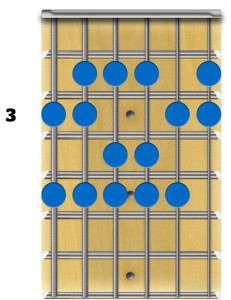
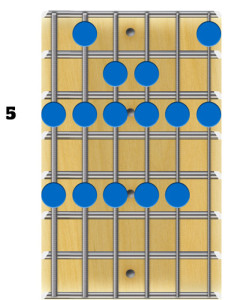
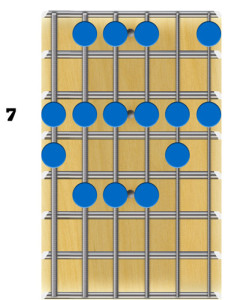
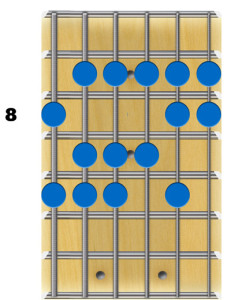
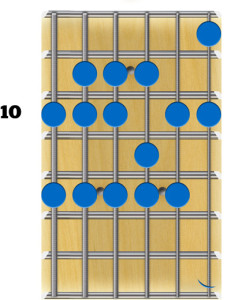
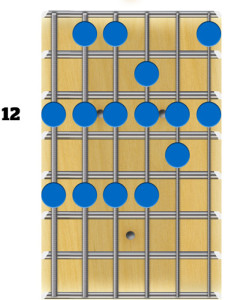
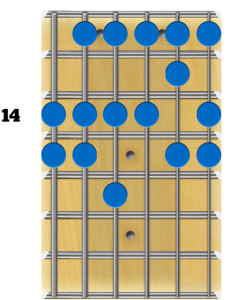
This article expands on concepts from the LICK FACTORY’s Set 1 and Set 2 courses. These lessons cover the first steps in creating Harmonised Scales and developing the chords behind modes. Having a complete understanding of keys and chordal structures is what gives you the knowledge to successfully use guitar modes.
Need a quicker chordal fix? Check out the ULTIMATE CHORD GUIDE: Volume 1.







